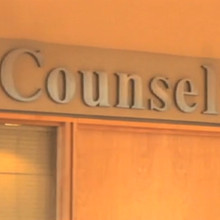Ball State University senior Krystel Brattain has been dealing with depression and bipolar disorder since she was in sixth grade.
Eight years after her initial diagnosis, during her sophomore year of college, Brattain said she noticed her depression worsening.
“I felt very tired, very sad,” she said. “I would cry randomly without any real triggers. I felt very alone.”
Those feelings led her to seek help at the Ball State Counseling Center.
Brattain is among an increasing number of students using the center’s services.
Annual reports from the center show regular intakes have increased by about 200 students from the 2006-2007 school year to the 2010-2011 school year.
June Payne, director of counseling and health services, said along with the increase in students has come an increase in the severity of the problems. She said the counseling center is seeing more students with depression, anxiety, undiagnosed ADHD and, like Brattain, bipolar disorder.
“There’s a lot of pressures that today’s students are feeling. A lot more technology, a lot more things to learn that some students in the past were not dealing with,” Payne said.
According to Payne, Ball State is well-equipped to handle additional demand for counseling services, with 14 staff members serving a student body of about 22,000. Using those figures, the university has one counselor for every 1,571 students.
Following the guidelines of the International Association of Counseling Centers, however, requires excluding doctoral students and trainees from the count of counselors.
Under that method, Ball State’s ratio of counselors to students drops to one for every 2,208 students.
Either way, the ratio is higher than the IACS-recommended ratio of one-to-1,500. IACS is an accrediting body for college counseling centers, and Ball State is one of just two state universities that is accredited.
Payne, who sits on the IACS board, said it might be time to lower the standard.
“To my knowledge, that standard has not been revised in some time,” she said.
Ball State, in fact, is one of the better universities in Indiana in terms of counselor to student ratio. For instance, Vincennes University, which is not IACS accredited, has a ratio of one counselor to 5,333 students.
Brattain, for one, said Ball State’s counseling center was there for her when she needed support.
“It felt like people didn’t really want to see me because I was depressed,” she said. “It was really nice to have someone to talk to and someone who would actively listen and give me some advice.”
